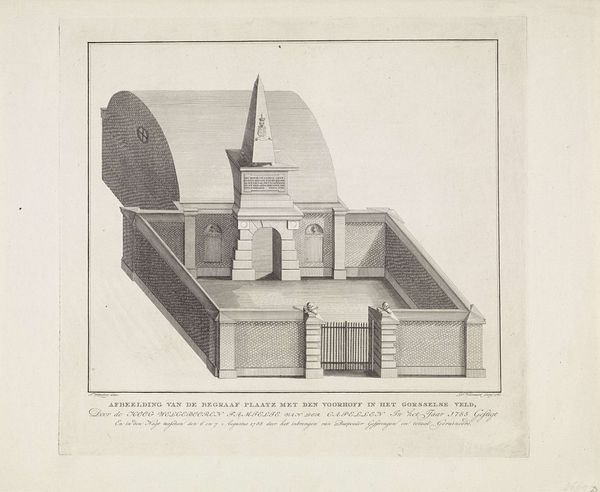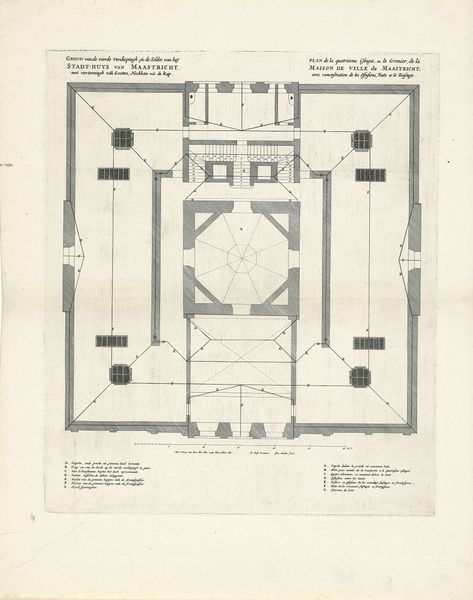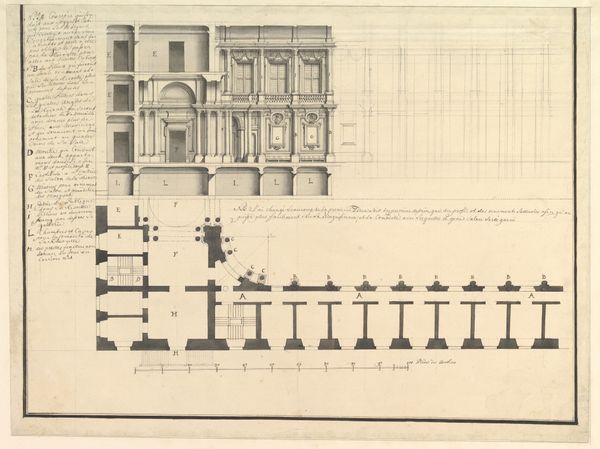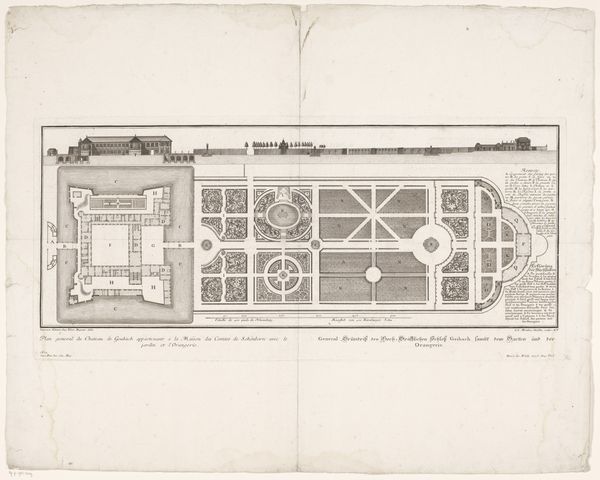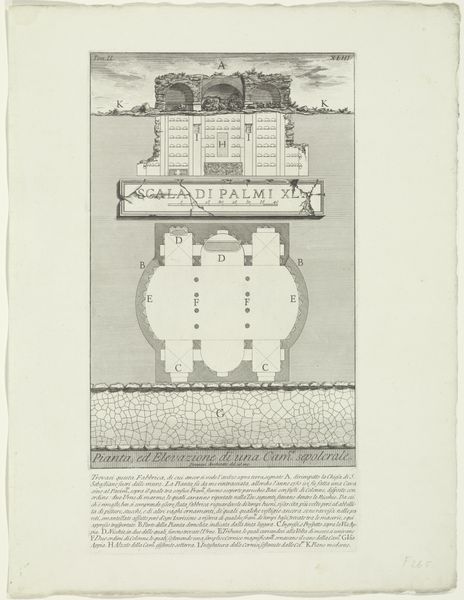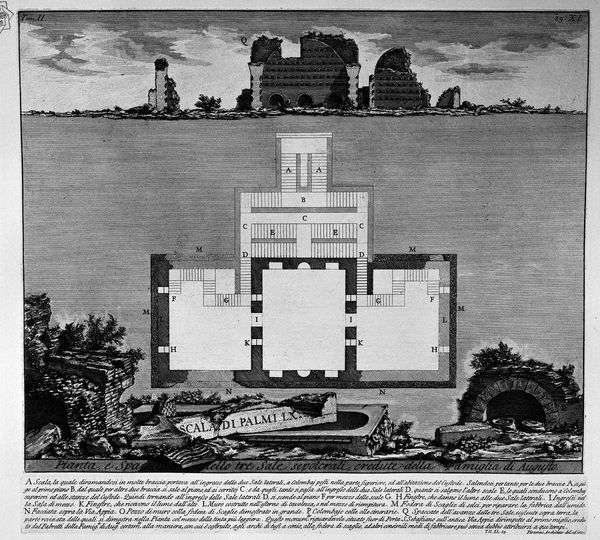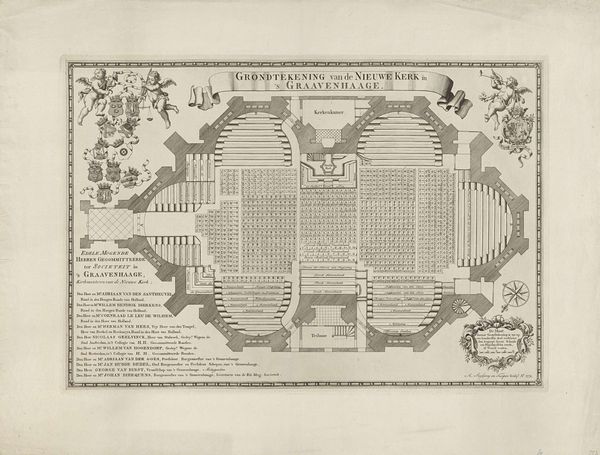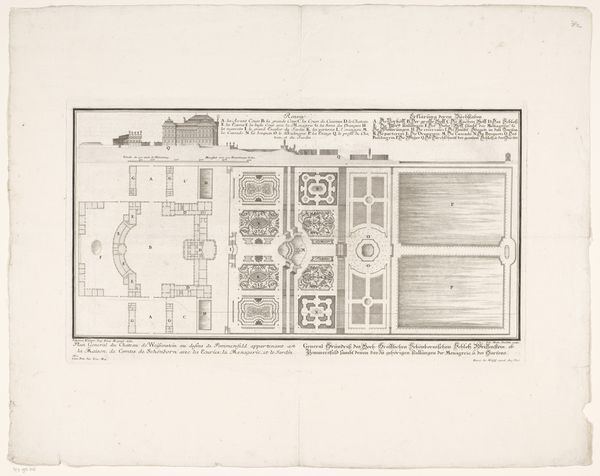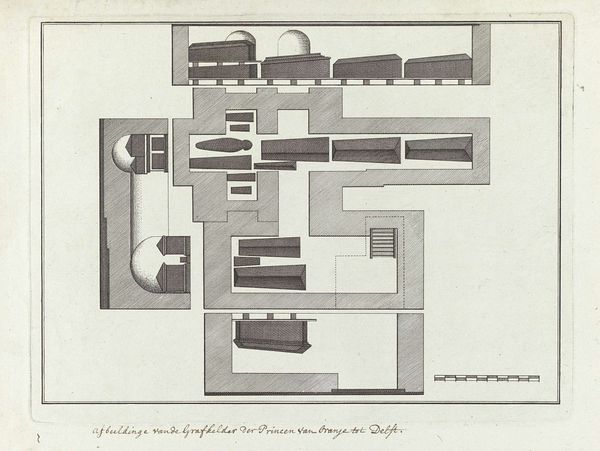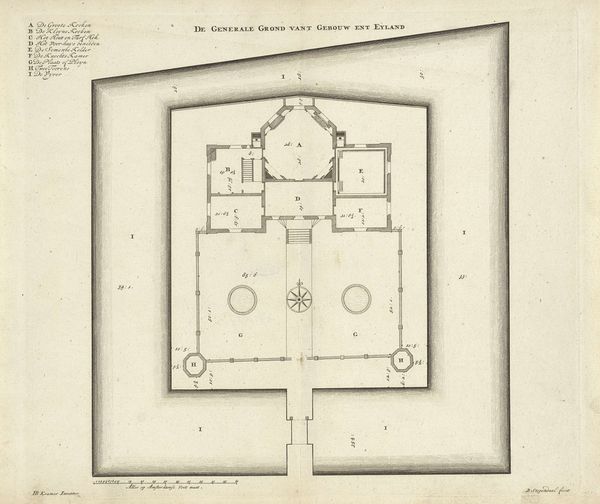
Plan of the Mausoleum of Caecilia Metella, wife of the Triumvir Marcus Crassus..., from Le Antichità Romane (Roman Antiquities), tome 3, tavola 49 1756 - 1757
0:00
0:00
drawing, print, etching, engraving, architecture
#
drawing
#
neoclassicism
# print
#
etching
#
perspective
#
romanesque
#
ancient-mediterranean
#
engraving
#
architecture
Dimensions: Sheet: 21 1/4 x 30 5/16 in. (54 x 77 cm) Plate: 17 5/16 x 20 1/2 in. (44 x 52 cm)
Copyright: Public Domain
Curator: This etching by Giovanni Battista Piranesi, created between 1756 and 1757, presents architectural studies of the Mausoleum of Caecilia Metella. The print offers multiple perspectives on this ancient Roman structure. Editor: My initial response is of stark, geometric precision. The print isolates different views—plan, elevation, section—revealing a deep understanding of form and its inherent logic. The absence of color accentuates the line work and spatial relationships, rendering the monument in a cerebral, almost diagrammatic light. Curator: Indeed. Piranesi’s approach reflects the prevailing Neoclassical interest in empirical accuracy and measured documentation of antiquity. He isn't simply depicting a ruin; he’s dissecting its constituent parts, aiming to provide a scientifically informed representation. This exemplifies how 18th-century artists engaged with the past, emphasizing reason and objectivity in their interpretation. Editor: Yet there's also an artistic license at play. Note the emphasis on light and shadow, creating depth and volume within the precisely rendered lines. Piranesi isn't merely an architectural draughtsman; he uses etching techniques to invest the structures with a sense of gravity. Also, observe how he frames these diagrams; they create an overall sense of drama despite the muted tonality. Curator: Quite true. We see a romantic vision underpinning Piranesi’s engagement with classical ruins. Consider the mausoleum's context: originally constructed along the Appian Way, a major Roman thoroughfare, it acted not only as a burial place but as a symbolic statement of power and lineage. Piranesi invites us to imagine it within the landscape of memory and imperial ambition. Editor: And his work invites questions about reproduction and the aesthetic value. The rigorous order imposed on a ruin is itself an act of control, a strategy to contain a potentially overwhelming confrontation with history. Also, Piranesi’s strategic arrangements force a reevaluation of what architecture "means" within the sphere of visual culture. Curator: I find that it evokes a dialogue between meticulous analysis and subjective response—highlighting the ever-present tension between historical study and artistic interpretation. It gives us some thoughts to consider. Editor: Absolutely. A valuable lesson from an evocative print.
Comments
No comments
Be the first to comment and join the conversation on the ultimate creative platform.


